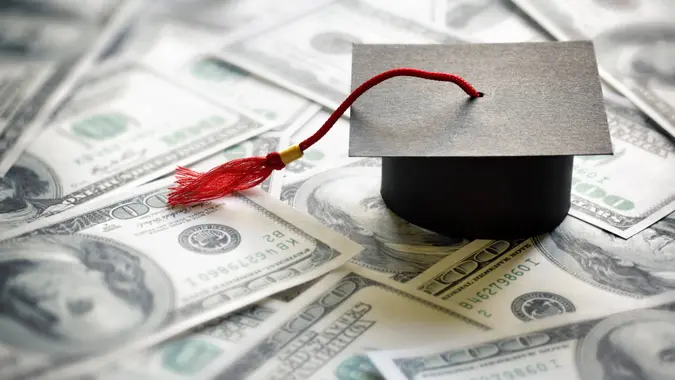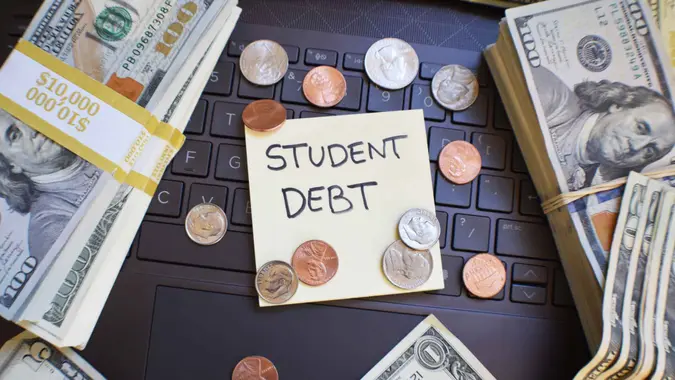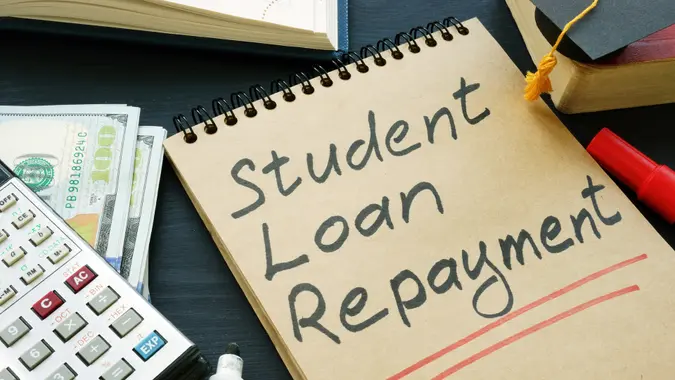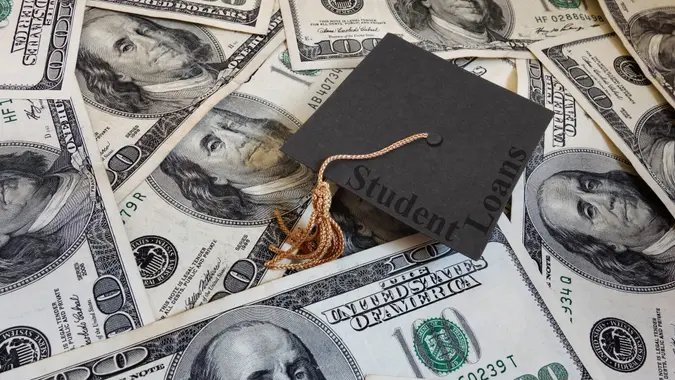What Is President Biden’s SAVE Plan for Student Loan Repayment?

Commitment to Our Readers
GOBankingRates' editorial team is committed to bringing you unbiased reviews and information. We use data-driven methodologies to evaluate financial products and services - our reviews and ratings are not influenced by advertisers. You can read more about our editorial guidelines and our products and services review methodology.

20 Years
Helping You Live Richer

Reviewed
by Experts

Trusted by
Millions of Readers
Even though the U.S. Supreme Court struck down President Biden’s proposal for student loan forgiveness, more than 43 million Americans with student loan debt could still benefit from a different, recent update to the federal student loan system. A new income-driven repayment plan could lower both your monthly payments and the overall sum you have to pay back — in some cases, by as much as 100% — if you meet certain criteria.
Keep reading to get the full scoop on the SAVE Plan for student loans, including who qualifies, how it can help you manage your student loan debt today and what future adjustments to the plan might mean for you.
See: 3 Ways To Recession-Proof Your Retirement
What Is the SAVE Plan for Student Loans?
The Saving on a Valuable Education plan, which rolled out in August 2023, is the latest income-driven repayment option for those with federal student loans. It took over from the Revised Pay-As-You-Earn plan and presents borrowers with the lowest monthly payment options available.
It’s a new kind of income-driven repayment program that bases your monthly student loan payments on your income and the number of people in your household instead of on how much you owe, and in some cases, it could reduce your student loan payments to zero.
Does the SAVE Plan Forgive Student Loans?
Many Americans were hopeful that the student loan forgiveness initiative would mean they’d be free of the often staggering debt tied to higher education. Unfortunately, the Supreme Court had other ideas. While the SAVE plan isn’t the same thing, you might still be able to kiss that stubborn student loan debt goodbye.
Student loan borrowers could see their monthly payments drop to zero under the SAVE plan. If you’re single and earn less than $32,800 a year or are an adult member of a family of four earning below $67,000, your monthly payments under the SAVE Plan would essentially be eliminated. Others stand to save hundreds or even thousands of dollars each year.
In addition to cutting your student loan repayment bill, the SAVE plan protects you from your debt ballooning due to unpaid interest as long as you’re up to date with your monthly payments. Even better, your student loan debt will be entirely forgiven after a set number of years as long as you keep making on-time payments under the new, adjusted scheme.
How SAVE Can Lead to Student Loan Forgiveness
There’s still a path to something like partial student loan forgiveness with the SAVE plan. If your original loan amount was $12,000 or less, your debt will be forgiven after you’ve made 120 payments, which is the same as saying after 10 years of on-time repayment. For every $1,000 you borrowed beyond that, you’ll need to make 12 more payments, or an extra year for each $1,000, with a cap of 25 years.
It’s important to bear in mind that the income guidelines that dictate your monthly student loan repayment under SAVE still apply for eventual student loan forgiveness. You’ll have to make between 10 and 25 years of on-time loan payments, but depending on your income and family size, that “payment” could still be $0.
Who Is Eligible for the Save Plan?
To qualify for SAVE, you must have a federally held student loan. All direct loans, whether subsidized, unsubsidized or consolidated, are covered under the program, including PLUS loans made to graduate or professional students. Federal Stafford Loans (also known as Federal Family Education Loans) are also covered if they’ve been consolidated into a Federal Direct Consolidation Loan.
Unfortunately, Direct PLUS loans made to parents don’t qualify, nor do consolidated loans used to repay PLUS loans originally made to parents. FFELs and Federal Perkins Loans aren’t eligible either, though some of these loans may qualify if consolidated into a direct loan. Private student loans and loans that are currently in default are also out.
Is the SAVE Repayment Plan Worth It?
Though this repayment plan doesn’t offer immediate loan forgiveness like President Biden’s first proposal aimed to, it’s still a good option for anyone carrying student loan debt. Your student loans won’t be wiped out immediately, and you’re still on the hook for making on-time loan payments, but there’s no real downside.
Currently, most people signed up for the SAVE program have nothing to pay each month, and those who do have payments are trimming about $102 from their monthly bills — which is around $1,224 each year.
Our in-house research team and on-site financial experts work together to create content that’s accurate, impartial, and up to date. We fact-check every single statistic, quote and fact using trusted primary resources to make sure the information we provide is correct. You can learn more about GOBankingRates’ processes and standards in our editorial policy.
- NCSL. 2023. "Supreme Court Strikes Down Student Loan Forgiveness Program."
- Education Data Initiative. 2023. "Student Loan Debt Statistics [2023]."
- SAVE. 2023. "FACT SHEET: The Biden-Harris Administration Launches the SAVE Plan, the Most Affordable Student Loan Repayment Plan Ever to Lower Monthly Payments for Millions of Borrowers."
- U.S. Department of Education. 2023. "Biden-Harris Administration Announces Nearly 5.5 Million Borrowers Are Enrolled in the SAVE Plan."
- Federal Student Aid. "SAVE Repayment Plan Offers Lower Monthly Loan Payments."
 Written by
Written by  Edited by
Edited by 
























